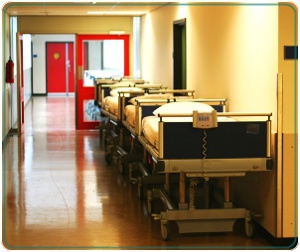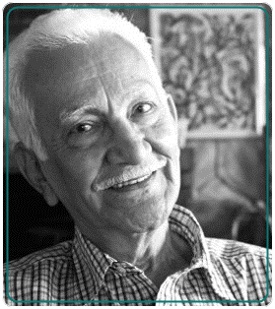
COPD has risen from the fourth leading cause of death to the third, after heart disease and cancer, and has gained in prevalence over the past decade, growing from 6 to 7 percent of adults ages 40 years and older, according to a new study.
The study,
Continuing to Confront COPD International Patient Survey, was conducted by researchers at Abt SRBI and funded by healthcare and pharmaceutical firm GSK. The new research is an update of its Confronting COPD survey conducted 10 years ago, and tracks the growing problem of COPD in the United States.
Additional findings:
- Twenty-six percent of US participants reported visiting the emergency room as a result of their COPD, with an additional 17 percent hospitalized within the last year — that’s a statistic similar to that reported in Mexico, and higher rate than reported in most European countries surveyed.
- Many patients may be underestimating the severity of their symptoms. While more than half (54 percent) of U.S. participants reported clinically significant dyspnea (shortness of breath), the majority (70 percent) classified their COPD as only mild or moderate in severity. GSK said this points to “a disconnect” between the level of symptoms and their own subjective assessment of the disease.
- The number of U.S. women affected by COPD (7.1 percent), was notably higher than males (6.2 percent). As a result, physicians may want to consider additional evaluation when women present with respiratory symptoms, recurrent respiratory infections, or fatigue, to assess COPD and improve outcomes.
- The percentage of U.S. participants who were identified as having never smoked was 25 percent – giving researchers reason to explore additional risk factors, such as environmental or occupational exposures, and asthma, as well as consider whether symptomatic non-smoking patients need early screening and access to recommended disease management.
"Given GSK's 40-year heritage in the respiratory disease area, we were keen to follow up on our decade-old landmark study—the first COPD cross-national, population-based survey of its kind—with an update that helps provide insights as to how the disease and its management have evolved over time," said Kourtney Davis, Ph.D., MSPH, lead global epidemiologist at GSK, who worked on the survey. "From these findings we see that the face of COPD is changing. Traditionally, COPD was considered to be a disease of elderly male smokers, but now, more women than men report having COPD, and about a quarter of patients have never smoked."
 Kopf, David. (2014 November 13). COPD Prevalence Has Increased In Past Decade. Retrieved from http://hme-business.com/articles/2014/11/13/copd.aspx.
Kopf, David. (2014 November 13). COPD Prevalence Has Increased In Past Decade. Retrieved from http://hme-business.com/articles/2014/11/13/copd.aspx.

Recent research shows that 20 percent of patients hospitalized with COPD exacerbations are readmitted within 30 days.
The finding was made in new study published in the December International Journal of COPD that largely focuses on the use of nebulized COPD medications and 30-day readmission rates. However, much of the study will be of interest to oxygen providers and other respiratory health professionals and caregivers.
The new study can be downloaded at
http://www.dovepress.com/hospital-readmissions-following-initiation-of-nebulized-arformoterol-t-peer-reviewed-article-COPD.
Other key findings from the report:
- In 2008, the US spent $53.7 billion on direct health care costs for treating asthma and COPD.
- Average annual health care costs for COPD patients varied dramatically from $2,003 to $43,471 depending on the types of medical services utilized, with hospitalized patients requiring treatment in the intensive care unit incurring the greatest expense.
- Across all COPD patients, hospital admissions account for the majority of direct health care costs.
-The average annual costs of treating COPD in the United States in 2006 revealed that the average patient incurred $3,943 in direct expenses, but those who were hospitalized incurred $15,093, and those requiring treatment in the intensive care unit during hospitalization incurred $43,471.5
Readmissions for COPD patients are a key concern for hospitals. Starting in October, hospitals will be penalized for excess COPD readmissions under the Patient Protection and Affordable Care Act. So keeping COPD patients out of hospitals will be critical, and hospitals are particularly interested in 30-day readmission rates.
 Kopf, David. (2014 February 20). Study: 20% of Hospitalized COPD Patients Readmitted within 30 Days. Retrieved from http://hme-business.com/articles/2014/02/20/copd-study.aspx.
Kopf, David. (2014 February 20). Study: 20% of Hospitalized COPD Patients Readmitted within 30 Days. Retrieved from http://hme-business.com/articles/2014/02/20/copd-study.aspx.

Chronic obstructive pulmonary disease (COPD) patients might need increased education and dialogue with physicians to better manage their conditions and prevent life-threatening exacerbations, a new study reports.
Exacerbations (also called “flare ups”) are a leading cause of hospitalization for U.S. COPD patients, but 62 percent admitted they don’t know much about the events, according to the new, two-part national Chronic Obstructive Pulmonary Experience (COPE) Survey conducted by COPD Foundation. An additional 16 percent did not know what an exacerbation was at all.
Exacerbations are acute periods when symptoms suddenly worsen, and breathing becomes even more difficult. Once patients have an exacerbation — described as either mild, moderate, or severe — they are more likely to experience another one. COPD patients surveyed in the study who experienced at least one exacerbation have suffered through an average of 22 exacerbations in their lifetime, the study reported.
“Exacerbations can have a devastating impact on overall health, and they can actually cause COPD to progress even faster and reduce lung function,” said Scott Cerreta, director of Education for the COPD Foundation. “Developing an action plan with instructions to help patients — and their caregivers — identify warning signs and what steps to take if an exacerbation should occur is a critical part of managing COPD.”
A key issue uncovered by the study appears to be a disconnect between what patients know and what their physicians say they are doing to educate their patients. For instance, 60 percent of COPD patients reported that they did not have an action plan for dealing with a flare-up, but 98 percent of the physicians surveyed by the COPE study said they discuss exacerbations with their patients, and 92 percent say they help establish action plans for patients. This suggests an opportunity to improve care through more productive, meaningful communication between COPD patients and their physicians.
Continue reading "COPD Patients Need Better Education"

This is a question that your physician can surely answer - and it's always a good idea to get your physician’s approval prior to starting any exercise routine. There are so many excellent reasons why we should all strive to make exercise a part of our daily lives if our physician gives us the green light!
More than just helping to keep our weight down and maintaining good cardiovascular health, exercise can also help improve our attention, reduce risk of cognitive impairment, decrease risk of falls, help improve our coping skills, and basically improve our overall health. Exercise also helps prevent osteoporosis by helping to maintain bone strength. Research has shown that as people get older, often times they don’t view exercise an important part of their life any more. Just because we're aging doesn't mean we have to be sedentary. The vast majority of older adults should participate in physical activity on a regular basis - even those that have various health conditions.
It's recommended that seniors do moderate aerobic exercise (such as brisk walking) 30 minutes per day at least five days a week, or vigorous aerobic exercise (such as jogging or running) for 20 minutes a day three times a week. If you are at risk for falling, there are specific exercises you can do to work on your balance (such as standing on one leg at a time close to something stable).
To get started, choose a type of exercise you enjoy such as swimming, walking, dancing, etc. Make a plan - what type of exercise, how long, and on what days you'll be exercising - and then stick with the plan! Walking is a great way to get started. You don’t have to join a gym or hire a personal trainer. When weather doesn't permit you to walk outside, walk indoors at a shopping mall.
Remember, any exercise is better than none, and every little bit helps. Start today by trying to fit more activity into your daily life - park farther away from the building you are going into, take the stairs instead of the elevator, walk around the house during the commercials while watching TV. Just get up and MOVE - you'll be glad you did!
 Camargo, RN, CRRN, Jan. (2014, May). Am I Too OLD or Too SICK to Exercise? The Pulmonary Press. Retrieved May 22, 2014 from http://email.medgroup.com/Respiratory/Pulmonary%20Press%20Newsletter_May%202014_Customizable.pdf.
Camargo, RN, CRRN, Jan. (2014, May). Am I Too OLD or Too SICK to Exercise? The Pulmonary Press. Retrieved May 22, 2014 from http://email.medgroup.com/Respiratory/Pulmonary%20Press%20Newsletter_May%202014_Customizable.pdf.

Living with COPD can be challenging, as the disease dramatically impacts your daily life. Often causing severe disability, a diagnosis of COPD can lead to feelings of hopelessness and helplessness.
As the disease progresses, any kind of physical activity or social interaction may prove difficult. Luckily, you can take back your independence and improve your quality of life by incorporating the following tips into your daily life:
Maintain a Safe Environment
Maintaining a safe environment is an important part of COPD management and should be moved to the top of your priority list. Safety, both inside and outside the home, will help to preserve your health and assist you in carrying out activities of daily living in a safe manner. Things that you can do to foster safety around your home include:
• Remove all throw rugs from the floors
• Place safety bars inside bathrooms, showers and bathtubs and along walkways both inside and outside the home
• Use a raised toilet seat
• Remove all cords and other debris from pathways inside and outside the home
• Ensure adequate lighting
• Use non-slip slippers or shoes when moving about the home
• Discard any medication expired or not in use in a safe place
• Do not allow yourself to be near anyone who smokes (especially if on oxygen).
• Write down emergency numbers and place in a visible place
Practice Effective Communication
Most of us take our ability to communicate with others for granted. But, with COPD, communication may become difficult due to extreme shortness of breath. It's important for you to know that it's OK to take your time speaking. Talk in short phrases or sentences and pause in between to rest if necessary.
Conserve Your Energy
Breathlessness is understandably the most frightening aspect of COPD. Unlike healthy people, breathing for a COPD patient involves a conscious effort and can be extremely challenging. Practicing energy conservation techniques will help you pace yourself so you can complete your activities of daily living and not get so out of breath.
Continue reading "Living with COPD"
 COPD has risen from the fourth leading cause of death to the third, after heart disease and cancer, and has gained in prevalence over the past decade, growing from 6 to 7 percent of adults ages 40 years and older, according to a new study.
COPD has risen from the fourth leading cause of death to the third, after heart disease and cancer, and has gained in prevalence over the past decade, growing from 6 to 7 percent of adults ages 40 years and older, according to a new study.
 Recent research shows that 20 percent of patients hospitalized with COPD exacerbations are readmitted within 30 days.
Recent research shows that 20 percent of patients hospitalized with COPD exacerbations are readmitted within 30 days. Chronic obstructive pulmonary disease (COPD) patients might need increased education and dialogue with physicians to better manage their conditions and prevent life-threatening exacerbations, a new study reports.
Chronic obstructive pulmonary disease (COPD) patients might need increased education and dialogue with physicians to better manage their conditions and prevent life-threatening exacerbations, a new study reports. This is a question that your physician can surely answer - and it's always a good idea to get your physician’s approval prior to starting any exercise routine. There are so many excellent reasons why we should all strive to make exercise a part of our daily lives if our physician gives us the green light!
This is a question that your physician can surely answer - and it's always a good idea to get your physician’s approval prior to starting any exercise routine. There are so many excellent reasons why we should all strive to make exercise a part of our daily lives if our physician gives us the green light!  Living with COPD can be challenging, as the disease dramatically impacts your daily life. Often causing severe disability, a diagnosis of COPD can lead to feelings of hopelessness and helplessness.
Living with COPD can be challenging, as the disease dramatically impacts your daily life. Often causing severe disability, a diagnosis of COPD can lead to feelings of hopelessness and helplessness.